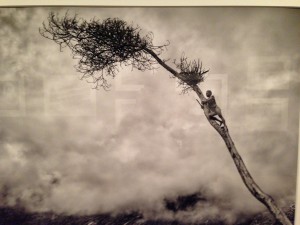Nelson Daniel Agyei-Odame
GRA 2330 Digital Photography
Photography Exhibit
Genesis
The photo exhibit by Sebastiao Salgado was very edifying for me. As I observed the images at the exhibit it raised several questions. There were approximately one hundred and fifty images at this exhibit; broken into about twenty different categories. Most of the photographs I saw were grayscale with extreme black and white contrast. There were also different kinds of photos such as landscapes, animals, anthropology/ethnographic and more. I believe that this exhibit was targeted to everybody that is human, mainly people in first world countries. I think this because the title of the exhibit “Genesis” mean the beginning. Most of the ethnographic were of cultures that were “one with nature” with no technological advancements, they were used their natural recourses and respected the land. That’s what I think the whole point of the exhibit was, to encourage the rest of human kind to respect the earth and all its natural resources.
The kinds of photographs I saw at the exhibit first of landscapes. The first category were very beautiful pictures of the Grand Canyon that really stood out to me. As I explored the other categories in the exhibit I saw many different cultures of people that survive using natural methods. Most of these cultures were living in rainforests, jungles, deserts, and more. Some lived in huts and caves but the one that stood out to me the most were the people that lived in tree houses that were really high up. Throughout this exhibit I didn’t see anything modern or industrialized but they seemed to be surviving just fine.
One photo out of the many that I really liked was in the “Durst family gallery” This photograph was on the Grand Canyon. The photograph had a great contrast between lights and darks. It had strong horizontal lines and wide depth of field. This long shot photo really grabbed my attention because you can see the whole sky as well as the whole Grand Canyon. The sky was filled with really dramatic clouds which really stood out because of the black and white contrast.
Overall I think the exhibit was about the beauty of planet earth and communicates that we should all do more to preserve the beauty. I drew this conclusion because as I recall, all the photographs had a common theme, which was either the beauty of nature or the interactions of humans and animals with nature.




